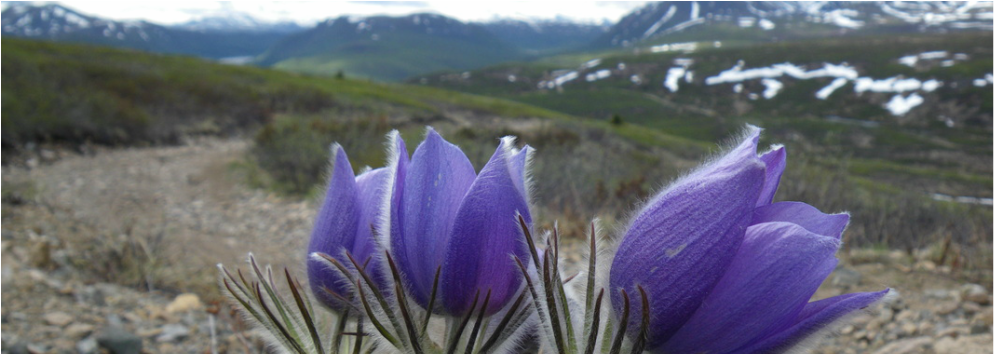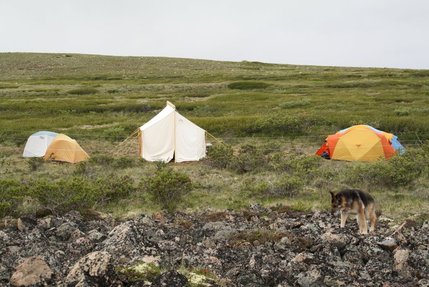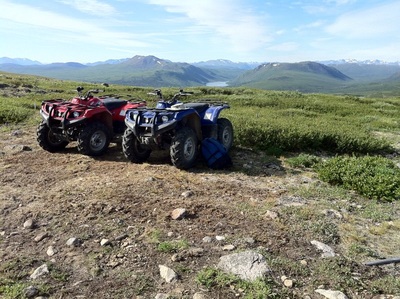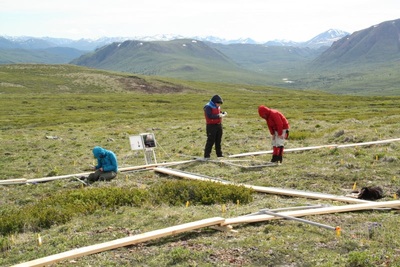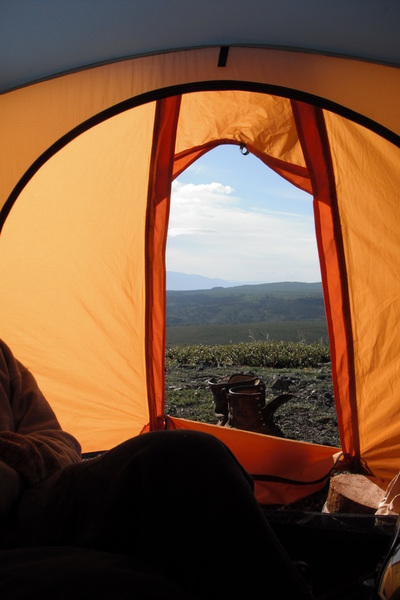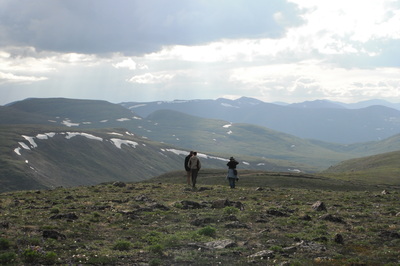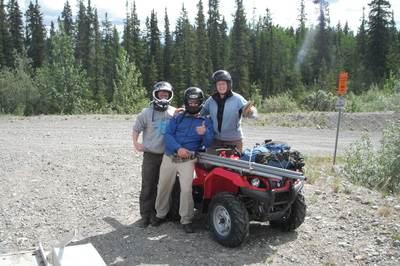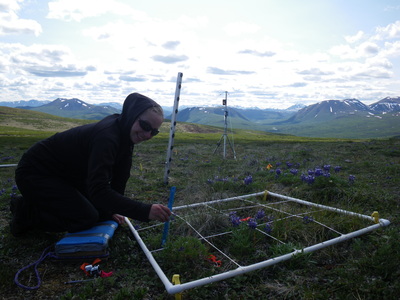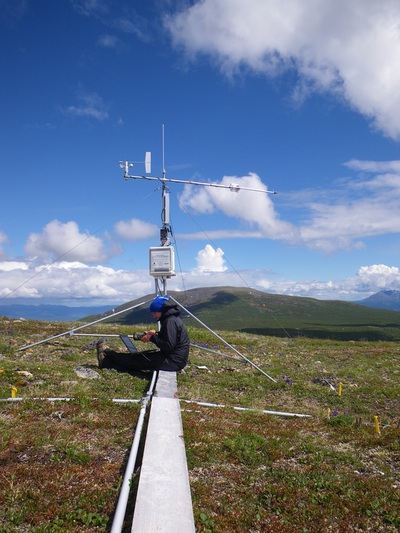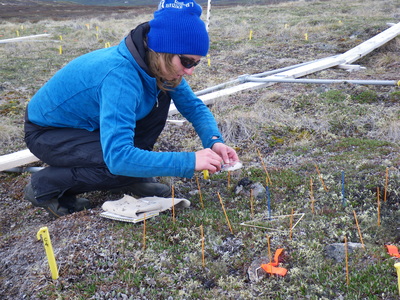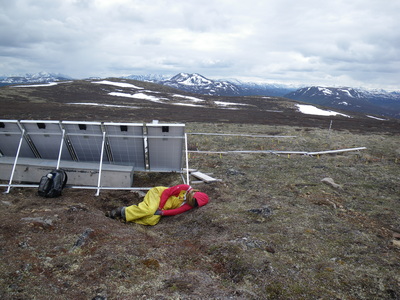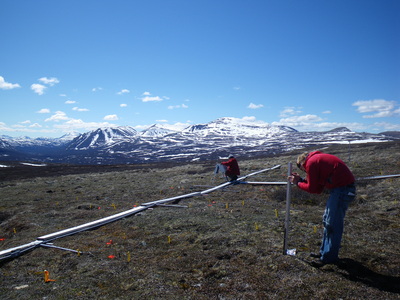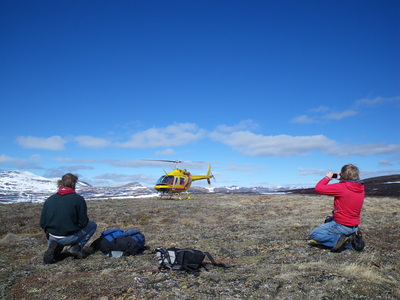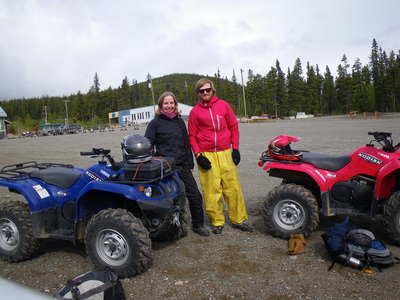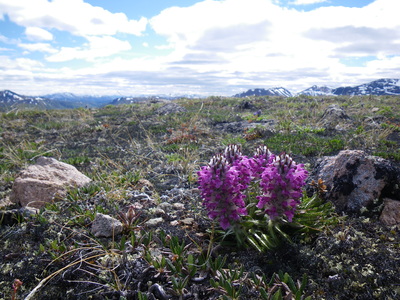- Soil factors driving plant dynamics in subarctic tundra, southern Yukon
|
|
Research in alpine tundra of the Wolf Creek watershed, southern Yukon Territory: Climate in northern regions is changing rapidly, and continued warming has been predicted into the coming century. Changes in climate may lead to changes in vegetation communities through direct effects on plant physiology and soil processes, or may indirectly alter communities by causing changes in disturbance regimes. Although many physiological processes in northern ecosystems are strongly limited by temperature, ecological communities may show relatively little response to changes in temperature because population changes are buffered by the long life span of many component species. Consequently, ecosystems may show the greatest potential to change in composition when temperature changes are combined with disturbances that disrupt the existing plant communities. The long-term goal of this research is to understand how disturbance and climate change may interact to drive future changes in northern ecosystems.
|
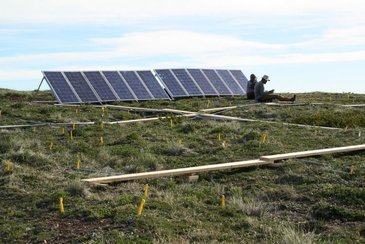
Field experiments are an essential component of global change research, as they provide the only means to test causal effects of changes in environmental factors on intact ecosystems. The purpose of this research project is to conduct a manipulative experiment that examines the effects of soil warming and nutrient fertilization on soil and vegetation processes. The experiment at Wolf Creek manipulates two environmental factors: a) soil temperature, by warming patches of soil by 2 degrees C above ambient summer temperature, and b) soil nutrients, by using nitrogen fertilizer to double the pool size of mineral nitrogen in the near surface soil. Experimental treatments (including controls, with no manipulation) were randomly applied in a factorial design to small, 1x1 m patches of tundra. The experimental study also includes comparing vegetative recruitment across different levels of natural disturbance: patches with exposed mineral soil caused by local frost disturbance, and patches with complete cover of tundra vegetation and plant litter.
|
Although a number of studies have evaluated the effects of temperature warming on tundra ecosystems, many of these studies have involved erratic effects on soil temperatures and have consequently poorly quantified ecosystem responses to changes in soil temperatures. The absence of clear experimental tests of soil warming effects is critical given that several studies suggest that changes in soil, not air, temperature regulate many aspects of plant growth, soil nutrient cycling, and ecosystem carbon exchange. This experiment will be one of the first we are aware of to accomplish controlled soil warming at a remote site without a connection to a power grid. By combining soil warming with a fertilization experiment, we hope be able to separate out the direct effects of warming on plant growth from indirect effects related to warming effects on biogeochemical cycling. Stay tuned for future results!
|
